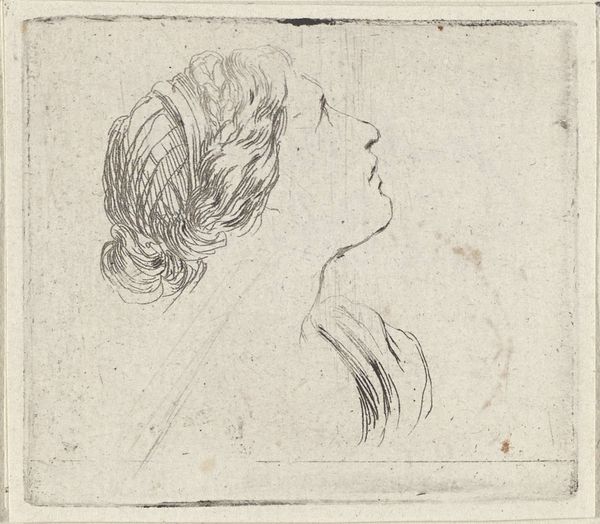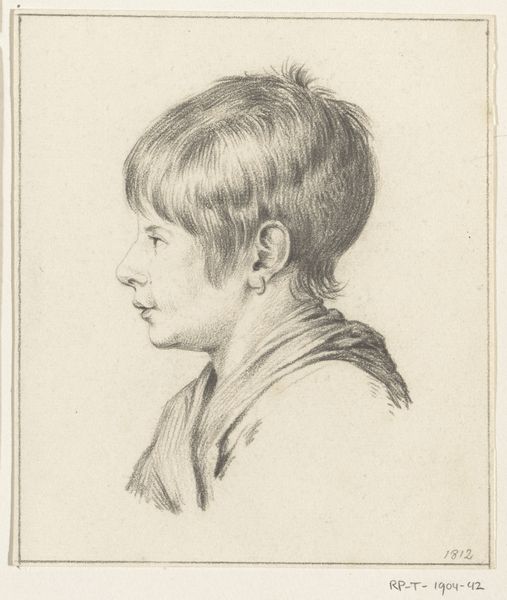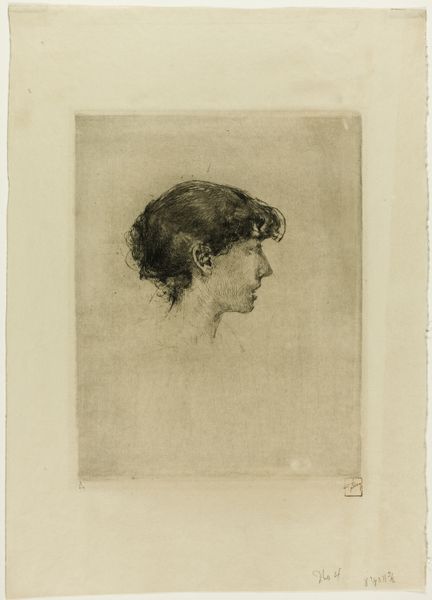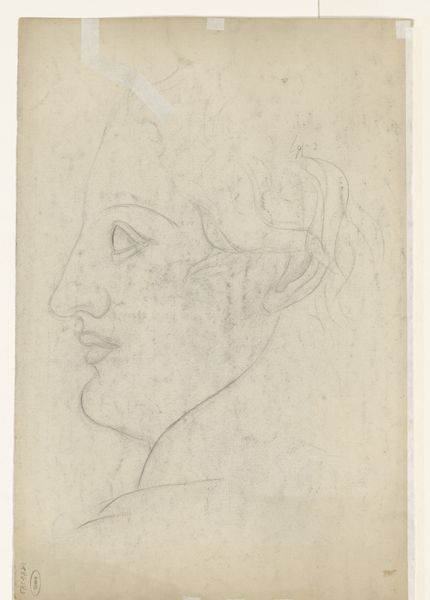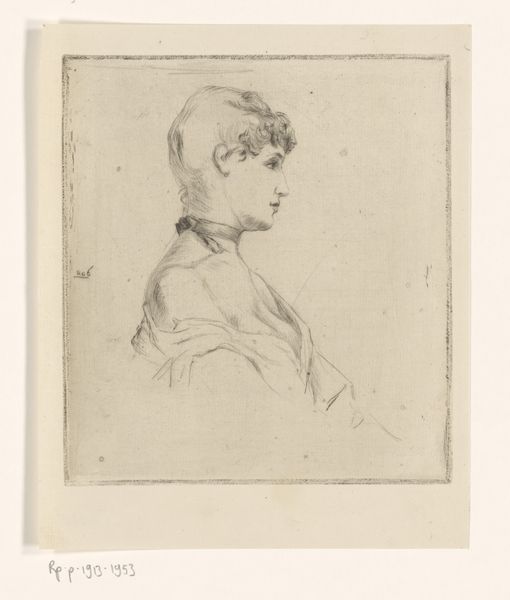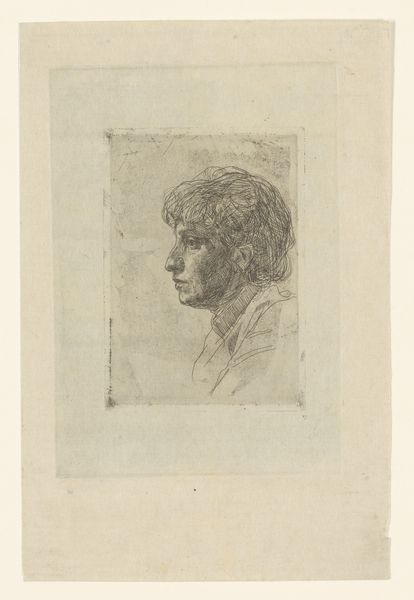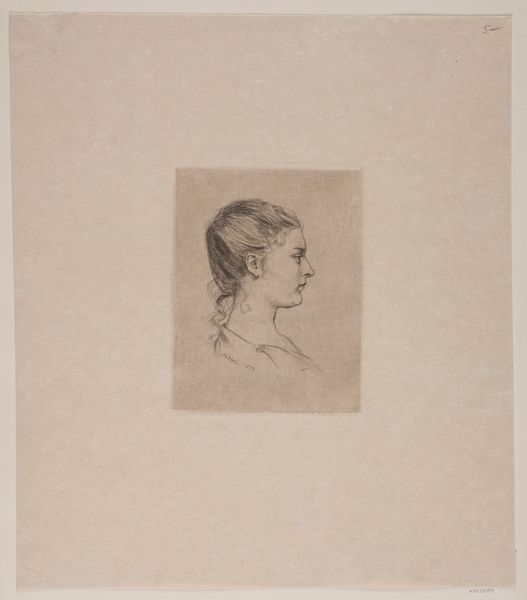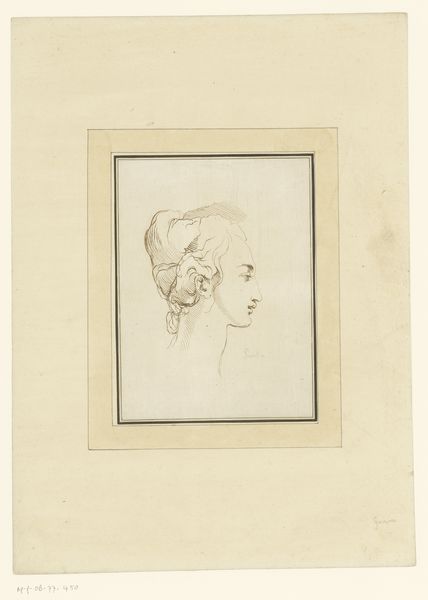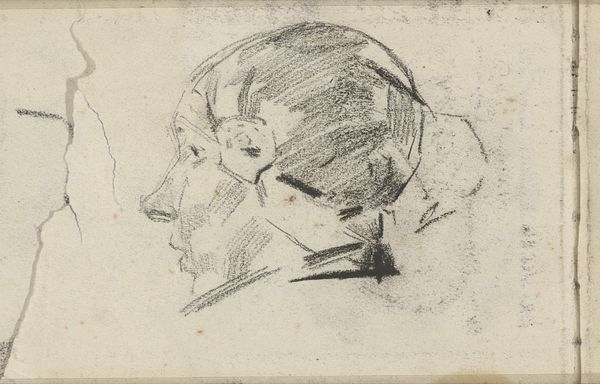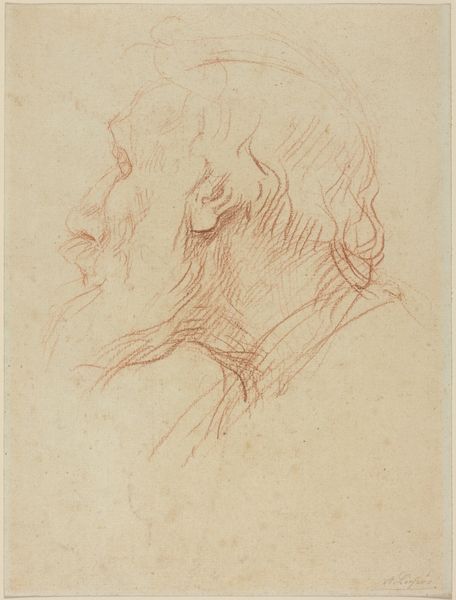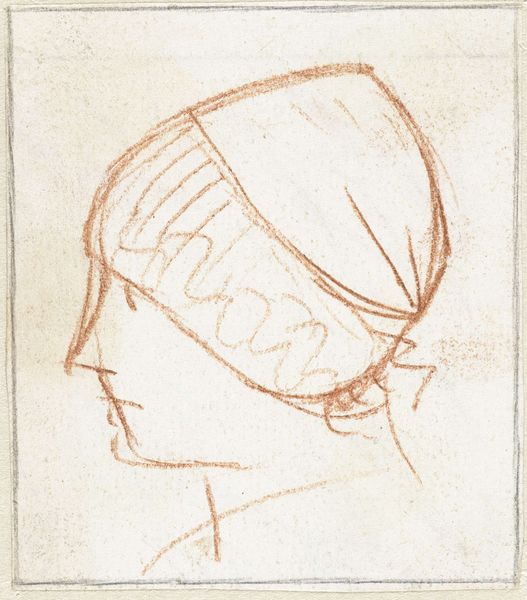
drawing, pencil
#
portrait
#
drawing
#
toned paper
#
light pencil work
#
neoclassicism
#
pencil sketch
#
classical-realism
#
figuration
#
personal sketchbook
#
ink drawing experimentation
#
romanticism
#
pencil
#
line
#
sketchbook drawing
#
pencil work
#
watercolour illustration
#
history-painting
#
academic-art
#
sketchbook art
#
fantasy sketch
Copyright: Rijks Museum: Open Domain
Curator: This intriguing sketch is titled "Head with Mercury Helmet" ("Kop met Mercuriushelm"). Attributed to Ernst Willem Jan Bagelaar, it was likely created sometime between 1798 and 1837, using pencil on paper. What impressions does it evoke in you? Editor: A fleeting dream of antiquity! The swift, almost nervous lines give it a real sense of urgency. The sepia tones against that faded paper almost feel like something unearthed. It whispers stories. Curator: The helmet immediately invokes Hermes or Mercury, a figure embodying communication, swiftness, and perhaps a trickster quality. Helmets were crucial identifiers, especially within neoclassical imagery—markers of role, attribute, and station. Editor: Right, but look how soft those lines are! It’s not a grand, marble statue. It feels much more vulnerable, personal. The figure’s eyes are covered. What does it mean when the messenger can't see? Maybe he's tired of the messages? Curator: Symbolically, blindfolding often represented impartiality, justice, or even ignorance. But here, in this drawing, I lean more towards suggesting limitations, perhaps even a commentary on the artist’s or the era’s restricted perspectives. Editor: Or, you know, maybe it's just a really cool hat covering his eyes! Seriously, though, it's the imperfection of the sketch, the lines that stray and fade, that make it so affecting. Curator: That aligns beautifully with Romantic sensibilities, then blossoming during the presumed creation period. Even amidst the echoes of classical form, that urge for individual expression and emotional candor is asserting itself. It's not about rigid idealism. It embraces imperfections, that which makes it real, honest and identifiable to everyone that looks upon this drawing. Editor: Exactly! You've got this ancient symbol filtered through a very human, searching hand. It leaves me thinking about the myths we still cling to, the messages we keep sending, even when we're not entirely sure where they're going. Curator: And it underscores, perhaps, how cultural memory adapts and refracts itself across eras, altering even our fundamental perceptions of heroism, authority, and connection. Thank you for sharing such interesting insights. Editor: My pleasure! It's a deceptively simple sketch that clearly offers much more beneath its surface.
Comments
No comments
Be the first to comment and join the conversation on the ultimate creative platform.


